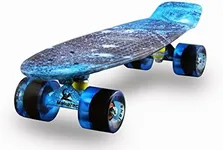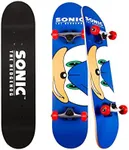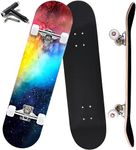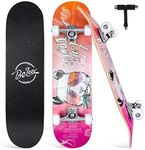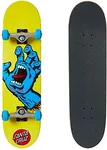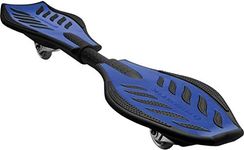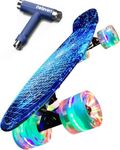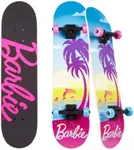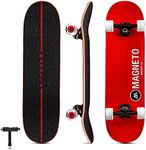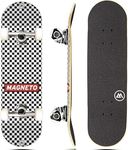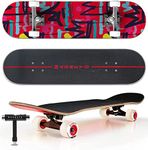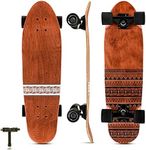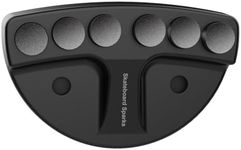Buying Guide for the Best Skateboards For Kids
Choosing the right skateboard for your child can be a fun and rewarding experience. It's important to consider several key factors to ensure that the skateboard is safe, comfortable, and suitable for your child's skill level and interests. By understanding the different specifications and how they impact the performance and usability of the skateboard, you can make an informed decision that will help your child enjoy their skateboarding experience to the fullest.Deck SizeThe deck size refers to the length and width of the skateboard. This is important because it affects the stability and control of the skateboard. For younger children or beginners, a smaller deck (around 6.5 to 7.5 inches wide) is usually better as it is easier to maneuver and control. For older kids or those with more experience, a wider deck (7.5 to 8.0 inches or more) can provide more stability and space for tricks. Consider your child's age, height, and shoe size when choosing the deck size.
Deck MaterialThe material of the skateboard deck affects its durability and performance. Most skateboard decks are made from maple wood, which is strong and flexible. Some decks are made from bamboo or composite materials, which can be lighter and more eco-friendly. For beginners, a standard maple deck is usually sufficient. If your child is more advanced or interested in specific types of skateboarding, you might consider other materials for their unique properties.
TrucksTrucks are the metal parts that attach the wheels to the deck. They play a crucial role in how the skateboard turns and handles. The width of the trucks should match the width of the deck for optimal performance. For beginners, standard trucks made from aluminum are usually a good choice as they are durable and provide a good balance of stability and maneuverability. As your child progresses, they might prefer lighter or more specialized trucks for different styles of skateboarding.
WheelsThe size and hardness of the wheels affect the ride quality and performance of the skateboard. Smaller wheels (50-54mm) are better for technical tricks and street skating, while larger wheels (55-60mm) are better for cruising and rougher surfaces. The hardness of the wheels is measured in durometers; softer wheels (78A-87A) provide a smoother ride and better grip, while harder wheels (88A-101A) are faster and better for tricks. Consider where your child will be skating and their skill level when choosing wheels.
BearingsBearings are the small metal rings that fit inside the wheels and allow them to spin. The quality of the bearings affects the speed and smoothness of the ride. Bearings are rated using the ABEC scale, with higher numbers indicating higher precision and speed. For beginners, ABEC 3 or 5 bearings are usually sufficient. More advanced skaters might prefer ABEC 7 or 9 bearings for faster and smoother rides. Consider your child's experience level and how fast they want to go when choosing bearings.
Grip TapeGrip tape is the rough, sandpaper-like material that covers the top of the skateboard deck. It provides traction and helps keep the rider's feet in place. Good grip tape is essential for safety and control. Most skateboards come with grip tape already applied, but you can also buy it separately if you need to replace it. Make sure the grip tape is applied smoothly and covers the entire deck for the best performance.
